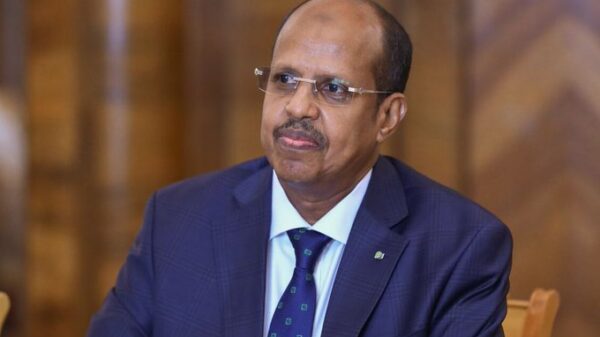NAIROBI, Kenya, Nov 3 – The Kenya Forest Service (KFS) will require Sh25.54 billion to achieve its five-year strategic plan that sets out to increase Kenya’s forest cover by 10 percent.
KFS Director David Mbugua said on Monday that the 2009-2014 plan aims to increase Kenya’s forest cover by four percent by the year 2012 and would work towards the ministry’s mandate of conserving and managing forests.
“We want to enhance forest productivity, promote eco tourism and also extension forestry. We are asking the government and donors to assist us with the money so that it can contribute to environmental sustainability,” he said.
Ministry of Forestry and Wildlife Noah Wekesa noted that the increase in Kenya’s population and forest activity continued to exert pressure on forest cover adding that the country had witnessed more than 10 percent decline in forest cover since 1968.
“We currently have about 1.2 percent forest cover and it has led to reduced water catchments. According to the 1999 population census, Kenya’s population stood at 28.6 million and is projected to reach 37.5 million by 2010. The growing population continues straining our forest resources so we need to increase our forest cover,” he noted.
He said it was necessary to develop a new forest policy that would guide the development of the sector and provide continuous guidance to all Kenyans on the sustainable management of forests.
“The Sessional Paper No.1 of 1968 did not provide adequate harmonisation between resource policies. It is therefore necessary to develop a forest policy that will increase our forest cover and take cognisance of other existing policies relating to land, its tenure and the environment. The new land policy will also be a good measure as we carry out our plan. It will address forest health and development, promote the economy and mainstream the forest sector,” he stated.
He however held that the KFS strategic plan to increase Kenya’s forests by 10 percent in five years would not be easy to achieve as Kenya was 80 percent arid and semi arid.
“Kenya is not like Finland or Costa Rica that get more rainfall than they need; only 20 percent of the country gets good rainfall. We therefore need to keep this in mind because the task ahead is a difficult one and we should look at planting trees in the semi arid and arid areas,” he observed.
Mr Wekesa encouraged Kenyans to plant trees saying it had ceased being the government’s responsibility.
“We should strive to plant trees on 10 percent of our land. Students should plant three trees at school and five at home. We should all take it up,” he said.
He also invited donors and partners to assist Kenya with aid that would help manage forests promising transparency in the handling of finances.
“We know the World Bank used to fund our forest management plans but left because of corruption. Let me say that we won’t have any hanky panky in managing finances that we get to sustain and develop our forests. We are therefore calling on all partners to assist us,” he held.
The minister also proposed carbon trading as a means of increasing the country’s revenue inflow.
“We might get paid by countries like China that have a lot of carbon dioxide emitting industries to plant trees that will purify the air and control pollution,” he explained.
Board Chairman Eric Koech added that the prolonged drought that hit the country was largely to be blamed on forest destruction stating that the plan would also address the growing demand on forest goods and services.
“Kenyans and the international community are keen to observe how the government is handling this key natural resource which provides a livelihood to thousands of Kenyans. Therefore planting trees will help us reverse the damage done to our water catchment areas,” he held.
He further explained that the strategic plan had laid ground for expansion of KFS activities to new ventures like eco tourism and it gave cognisance to Kenya’s Vision 2030 and the Millennium Development Goals.
There are about 400 eco tourism sites in Kenya’s forests that offer great facilities for sporting and other recreational activities and KFS have already approved development of 10 eco tourism sites within the Mount Kenya region.














































